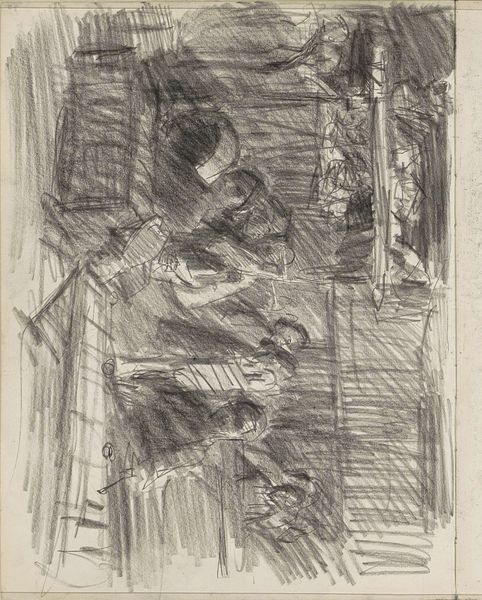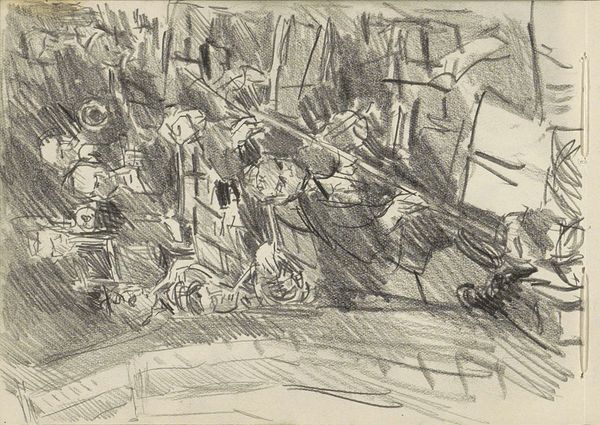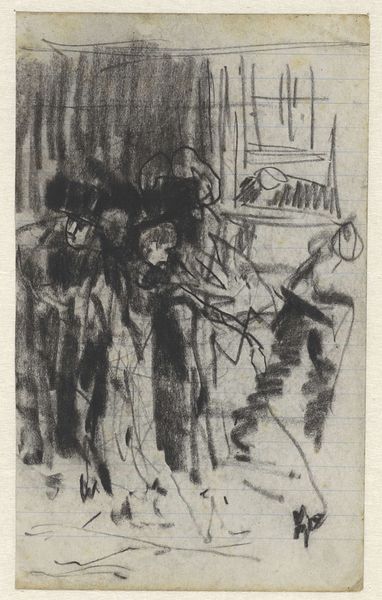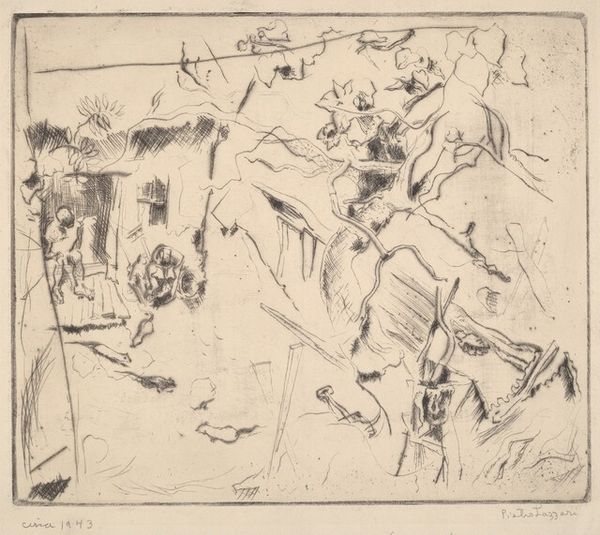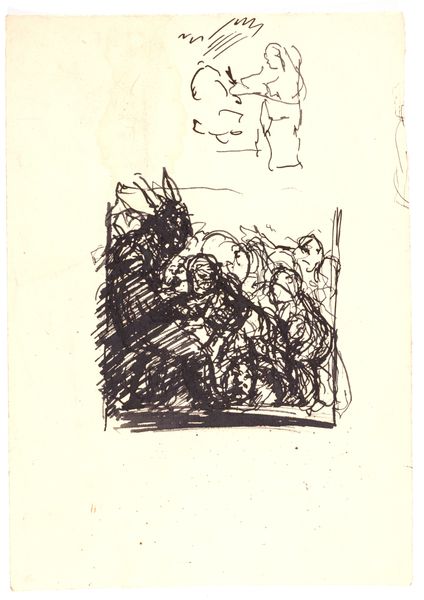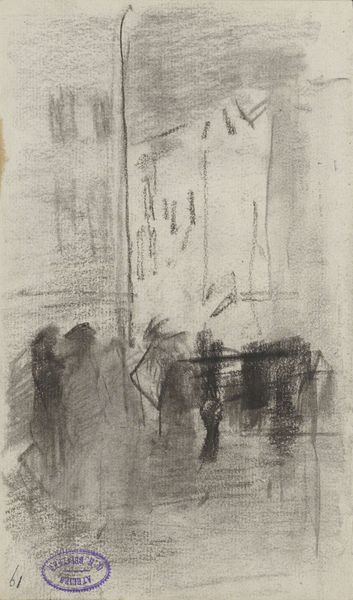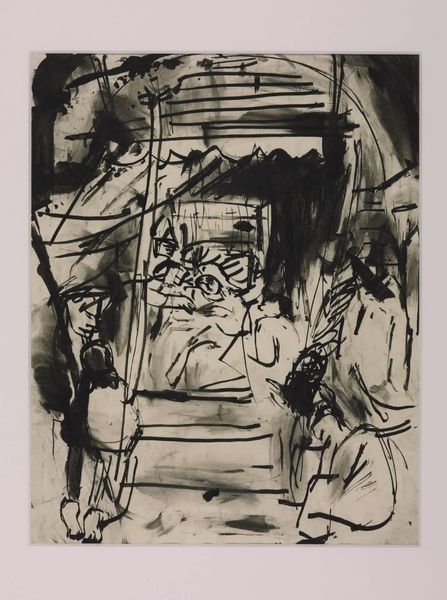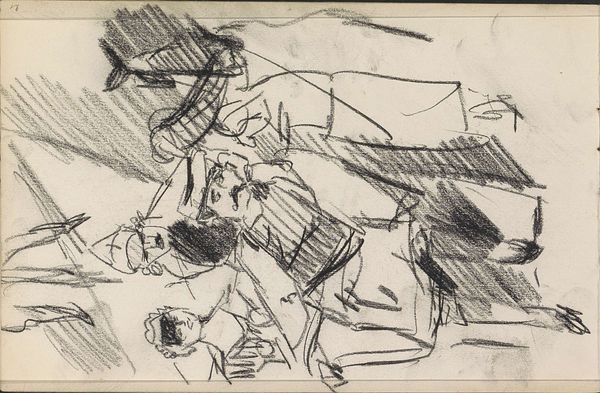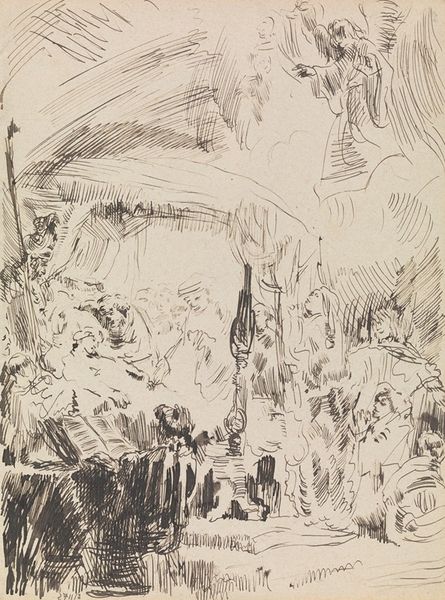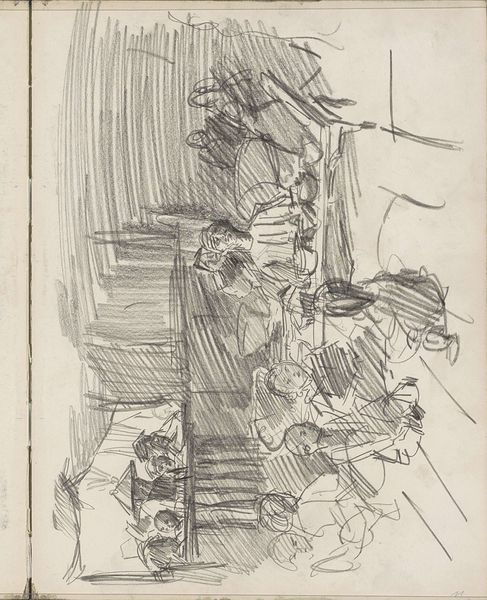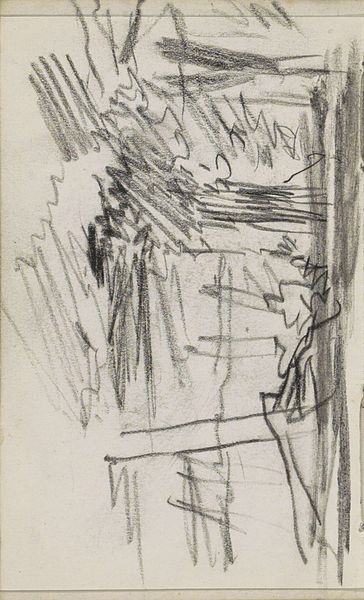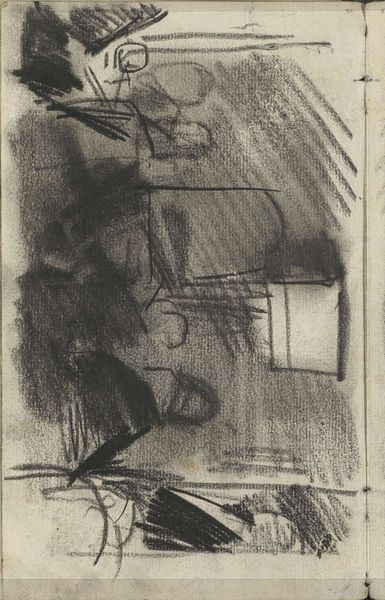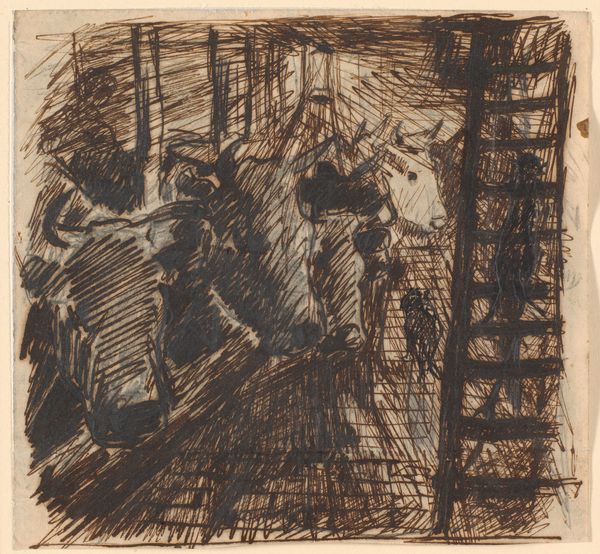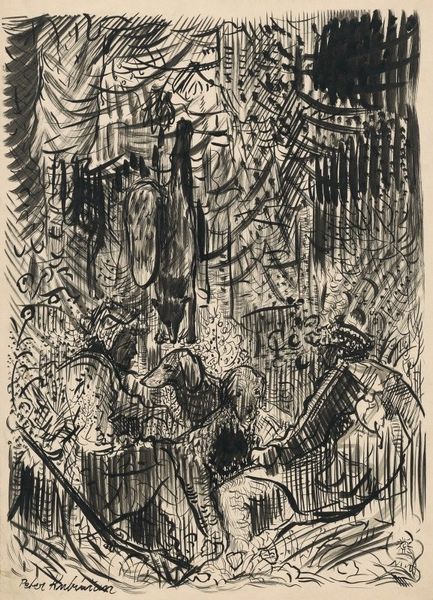
Figuren die op een terras naar een mensenmenigte kijken 1890 - 1946
0:00
0:00
Copyright: Rijks Museum: Open Domain
Editor: So this is Cornelis Vreedenburgh’s “Figures on a Terrace Watching a Crowd”, likely created sometime between 1890 and 1946. It’s a charcoal drawing and immediately strikes me as chaotic, like a snapshot of a bustling city square. What do you make of this piece? Curator: The rapid charcoal strokes here become fascinating when we consider the context of their production. The impressionistic style wasn't merely about capturing fleeting moments; it was about changing the *means* of representation. Rather than meticulously detailing a scene, Vreedenburgh uses charcoal – a readily available material – to document, maybe even critique, urban life’s frenetic energy and its burgeoning masses. Editor: I see what you mean. The charcoal itself, being such a simple material, almost democratizes the image. It feels less like a formal portrait of the city and more like a raw, immediate response. Curator: Exactly. The use of such materials suggests a deliberate choice to move away from academic precision and embrace the immediacy afforded by mass production in art. Notice how the figures themselves are rendered, not as distinct individuals, but as part of this churning social body. Editor: That's interesting. It almost feels like the material – the charcoal – is doing the work of creating that sense of a mass of people. Do you think he's making a specific statement about the experience of being in a crowd? Curator: The application of charcoal gives texture but the rough handling of this material shows the city might grind you down; you’re easily lost in it, like the individual lines becoming lost in the charcoal mass. Editor: That really shifts my perspective on the work. I was focused on the chaos, but the material itself seems to be a key element in understanding that feeling. Thanks for that. Curator: Indeed. By examining the processes and material underpinning this work, we are given unique insights into urban social conditions, as well as into how and why artists shifted their material choices to represent society at that time.
Comments
No comments
Be the first to comment and join the conversation on the ultimate creative platform.
